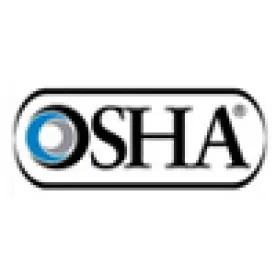On April 25, 2017, the Occupational Safety and Health Administration (OSHA) officially rescinded its 2013 letter of interpretation that many viewed as a clear bow to organized labor by the previous administration and that had created the potential to use an OSHA inspection as a union organizing tool. In its 2013 “Walk-Around Letter of Interpretation,” OSHA changed over four decades of prior accepted practice and declared that at non-union workplaces with no recognized collective bargaining agreement or relationship, even just one employee could select an outside/non-employee union organizer to act as an “authorized employee representative” during an OSHA walk-around inspection at the workplace. The Walk-Around Letter of Interpretation was written to the Health and Safety Specialist with the United Steel, Paper and Forestry, Rubber, Manufacturing, Energy, Allied Industrial and Service Workers International Union, purporting to interpret OSHA’s regulation at 29 C.F.R. § 1903.8 (“§ 1903.8”) on the participation of “[r]epresentatives of employers and employees” during an inspection. OSHA framed the question to be addressed as: “May one or more workers designate a person who is affiliated with a union without a collective bargaining agreement at their workplace or with a community organization to act as their personal representative for OSH Act purposes?”
OSHA’s position in the 2013 Walk-Around Letter of Interpretation was in direct conflict with the Occupational Safety and Health Act of 1970 (OSH Act) and its own regulations, as well as the agency’s own position in a previous letter of interpretation issued in 2003 (withdrawn in the 2013 Walk-Around Letter of Interpretation based on alleged past “confusion”). OSHA’s position, in practice, could also have been illegal under the National Labor Relations Act (NLRA) by seeking to force the employer in a non-unionized workplace to recognize a union where, as a matter of law, there had not yet been any such recognition as required under the provisions of the NLRA. OSHA’s 2013 position could have also been challenged on Fourth Amendment grounds. An employer could have argued that before OSHA could bring a non-employee into an employer’s workplace without the employer’s consent, a search warrant specifically authorizing such an entry was required.
OSHA’s April 2017 Memorandum
On April 25, 2017, OSHA issued a memorandum (the “April Memorandum”) rescinding the 2013 Walk-Around Letter as a result of the settlement of a lawsuit filed by the National Federation of Independent Business (NFIB) in a federal district court in Dallas, Texas, in 2016. In the lawsuit, NFIB sought a permanent injunction against OSHA’s position in the Walk-Around Letter of Interpretation. In a filing to the court dated April 27, 2017, NFIB voluntarily dismissed the lawsuit because OSHA had “demonstrated to [NFIB] that they had formerly rescinded the [2013 Walk-Around Letter] and that they have ordered the elimination of its directives from [OSHA’s] Field Operations Manual.”
In the April Memorandum, OSHA noted that Section 8(e) of the OSH Act already provides that employees during a walk-around OSHA inspection must be given the option of authorizing a representative to participate in the inspection. OSHA also noted that its regulations at 29 C.F.R. § 1903.8(c) say that, generally, “[t]he representative(s) authorized by employees shall be an employee(s) of the employer.” Only where “good cause is shown” and it is “reasonably necessary to the conduct of an effective and further physical inspection of the workplace,” in accordance with the requirements of § 1903.8(c), may an OSHA compliance officer allow a non-employee to accompany a compliance officer during an inspection.
Notably, the April Memorandum does not say that a “non-employee” may never be the representative of a union that does not represent the inspected employer’s employees. Indeed, the April Memorandum says that OSHA decided to withdraw the Walk-Around Letter of Interpretation “as unnecessary” in light of the relevant language of the OSH Act and § 1903.8(c). That said, it is highly unlikely that OSHA during the Trump administration, at least, will authorize its compliance officers to allow participation of union representatives who do not represent the employees of an employer being inspected. And, we suggest, it will be difficult for OSHA under any administration to show “good cause” for allowing such a union representative to participate as “reasonably necessary to the conduct of an effective and further physical inspection of the workplace.”
Key Takeaways
It is important for employers to note that, under the OSH Act and 29 C.F.R. § 1903.8, OSHA compliance officers still may attempt to include non-employees of the inspected employer to participate in a walk-around, to the extent there is “good cause” and doing so is “reasonably necessary to the conduct of an effective and thorough physical inspection.” When such a rare occasion arises, however, it usually is because some sort of technical or language expertise that the compliance officer does not have is necessary to the inspection—and, even then, OSHA usually provides the needed expertise from within the agency. OSHA’s reversal of its position set forth in the 2013 Walk-Around Letter simply means that the authorized representative of the employees of an inspected employer normally may not be a non-employee, including any representative of a union that does not represent those employees. Of course, if the employer’s employees are represented by a union, the union has a right to participate in the walk-around.






 />i
/>i


